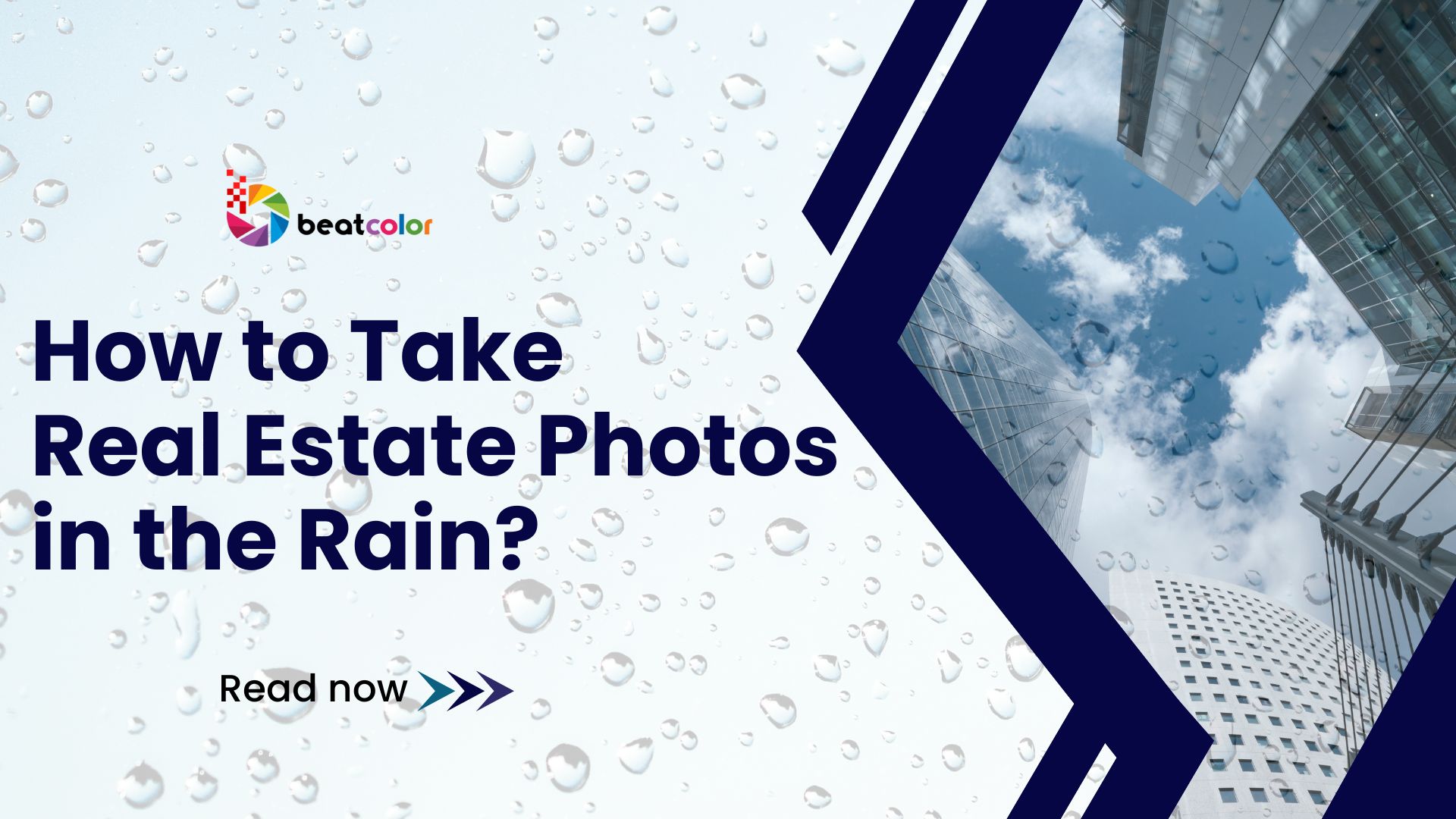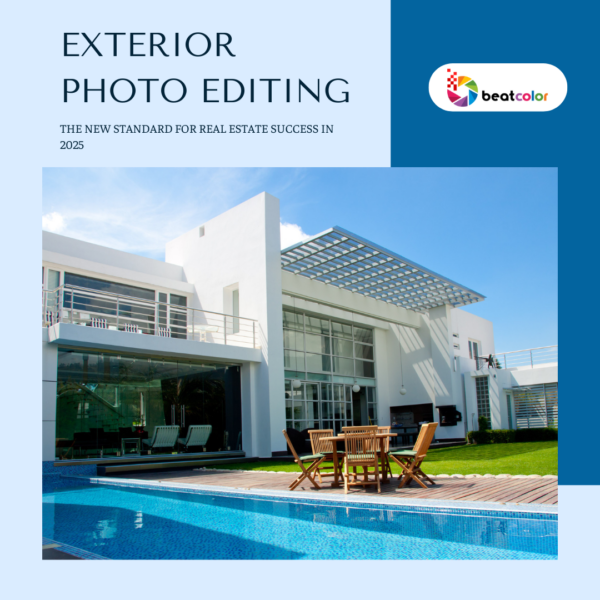How to Take Real Estate Photos in the Rain?
Real estate photography on rainy days can be challenging, but it also offers unique opportunities to capture captivating images. With the right preparation and technique, you can produce real estate photos that stand out from the competition. This guide will help you master the skills needed to take stunning photos in wet conditions, improving your overall real estate photography skills.
1. Preparing Your Equipment for Real Estate Photography in Rain
a. Use Waterproof Covers to Protect Your Gear
When taking real estate photos in the rain, the first step is to safeguard your equipment. Waterproof covers or rain sleeves are essential to protect your camera and lenses from moisture. Carrying an umbrella can also provide extra protection, allowing you to focus on the task without worrying about water damage.

b. Keep a Microfiber Cloth Handy for Clear Real Estate Photos
Raindrops on your lens can blur your real estate photos. Keeping a microfiber cloth handy allows you to quickly and gently wipe off water, ensuring your images remain sharp and professional. This small step can make a big difference in the quality of your real estate photography.
c. Use a Tripod for Stability in Wet Conditions
Wet surfaces can be slippery, so using a tripod provides the stability needed to keep your real estate photos crisp. A sturdy tripod also allows you to adjust your camera angles and settings more easily while maintaining sharp focus, which is critical for high-quality real estate photography.
Watch more: Removing Rain From Exterior Real Estate Photos
2. Using Reflections to Improve Real Estate Images
a. Capture Natural Reflections on Wet Surfaces
Rainy days offer the chance to use reflections creatively in your real estate photos. Wet surfaces like sidewalks, streets, and windows can create interesting reflections that add depth and intrigue to your images. This technique can help elevate your real estate photography and make it more appealing.
b. Use Puddles to Create Unique Perspectives
Puddles on the ground can act as natural mirrors, reflecting the property or surrounding environment. By positioning your camera low to the ground, you can capture these reflections and produce dramatic, eye-catching real estate photos. This adds an extra layer of creativity to your shots.

c. Incorporate Reflective Elements in Real Estate Images Composition
When composing your real estate photos, be mindful of reflective surfaces like windows, water features, or glass doors. These elements can add balance and interest to your shots, helping to draw attention to key features of the property. Using reflections effectively will enhance your real estate photography skills and produce more captivating images.
3. Maximizing Soft Lighting for Photography
a. Take Advantage of Natural Diffused Light
Rainy days provide soft, diffused lighting that reduces harsh shadows, making it perfect for real estate photography. This type of lighting helps to evenly illuminate both the exterior and interior of a property, allowing potential buyers to see more details clearly. Understanding how to work with diffused light is a key part of improving your real estate photography skills.
b. Adjust Camera Settings to Maximize Light
Since rainy weather often means lower light conditions, adjusting your camera’s settings is crucial. Increase the ISO, open your aperture, or use a slower shutter speed to let in more light. These small adjustments ensure your real estate photos stay bright and clear, even on cloudy days.
c. Use Reflectors to Enhance Natural Light
A reflector can be a valuable tool for bouncing available light onto the property, especially in dim conditions. Reflectors can help brighten key areas of the shot, making your real estate photography look more professional. This technique is especially useful when photographing interiors during a rainstorm.
4. Highlighting Key Property Features That Shine in the Rain
Rain can bring out the best in certain aspects of a property, making it essential to highlight these features in your real estate photos. For example, well-maintained landscaping looks particularly lush after a rainfall, and wet driveways can add a dramatic, polished look. Emphasizing these features in your real estate photography can make a property seem more appealing, even in less-than-ideal weather.
Additionally, showcasing the property’s structural integrity during a rainstorm can reassure potential buyers. If the home’s roof, drainage system, or outdoor spaces function well under rainy conditions, capturing these details in your real estate photos can demonstrate the property’s durability, which is a major selling point.
5. Mastering Composition for Rainy Real Estate Photography

a. Use Leading Lines to Draw Attention to the Property
Leading lines are a powerful tool in real estate photography. Rainy conditions can enhance these lines by adding texture to surfaces like walkways and driveways. You can use pathways, fences, or natural elements like trees to guide the viewer’s eye to the property. This makes your real estate photos more engaging.
b. Balance Wide-Angle Shots with Close-Ups
Effective real estate photography often combines wide-angle shots of the entire property with close-up shots of key architectural details. Rain can add texture and atmosphere to both types of images. By balancing these perspectives, you can provide a comprehensive view of the property while capturing its unique characteristics.
c. Experiment With Framing and Depth of Field
Incorporating framing elements like trees, doorways, or windows can add depth to your real estate photos. Rainy conditions often blur backgrounds, which can help focus attention on the main subject of the photo. Adjusting your depth of field to blur the background while keeping the property in sharp focus creates visually striking images.
6. Post-Processing to Perfect Photos Taken in the Rain
Post-processing is essential when refining real estate photos taken on rainy days. Simple adjustments like increasing contrast and brightness can help bring out the best in overcast or dimly lit images. Editing software can also be used to remove distractions like water spots or reflections that detract from the overall image.
Additionally, enhancing the colors of the property and its surroundings can make your real estate photography stand out. Saturating the greens of wet grass or the brightness of a freshly washed building can make your photos more visually appealing to potential buyers. Taking the time to carefully edit your images will ensure that your real estate photos look polished and professional, regardless of the weather conditions during the shoot.
Final thoughts
Rainy weather doesn’t have to be a hindrance when it comes to real estate photography. By preparing your equipment, using reflections, maximizing soft lighting, and mastering composition, you can create striking real estate photos that stand out in any listing. Post-processing ensures the final touches are perfect, making your real estate photography professional and compelling. With these tips, you’ll be well-equipped to improve your real estate photography skills and make the most of rainy days.
Related Posts:
Virtual Furniture Design: Transforming Real Estate Listings in 2024
Top 5 Companies Providing Real Estate Virtual Staging Services in 2024











